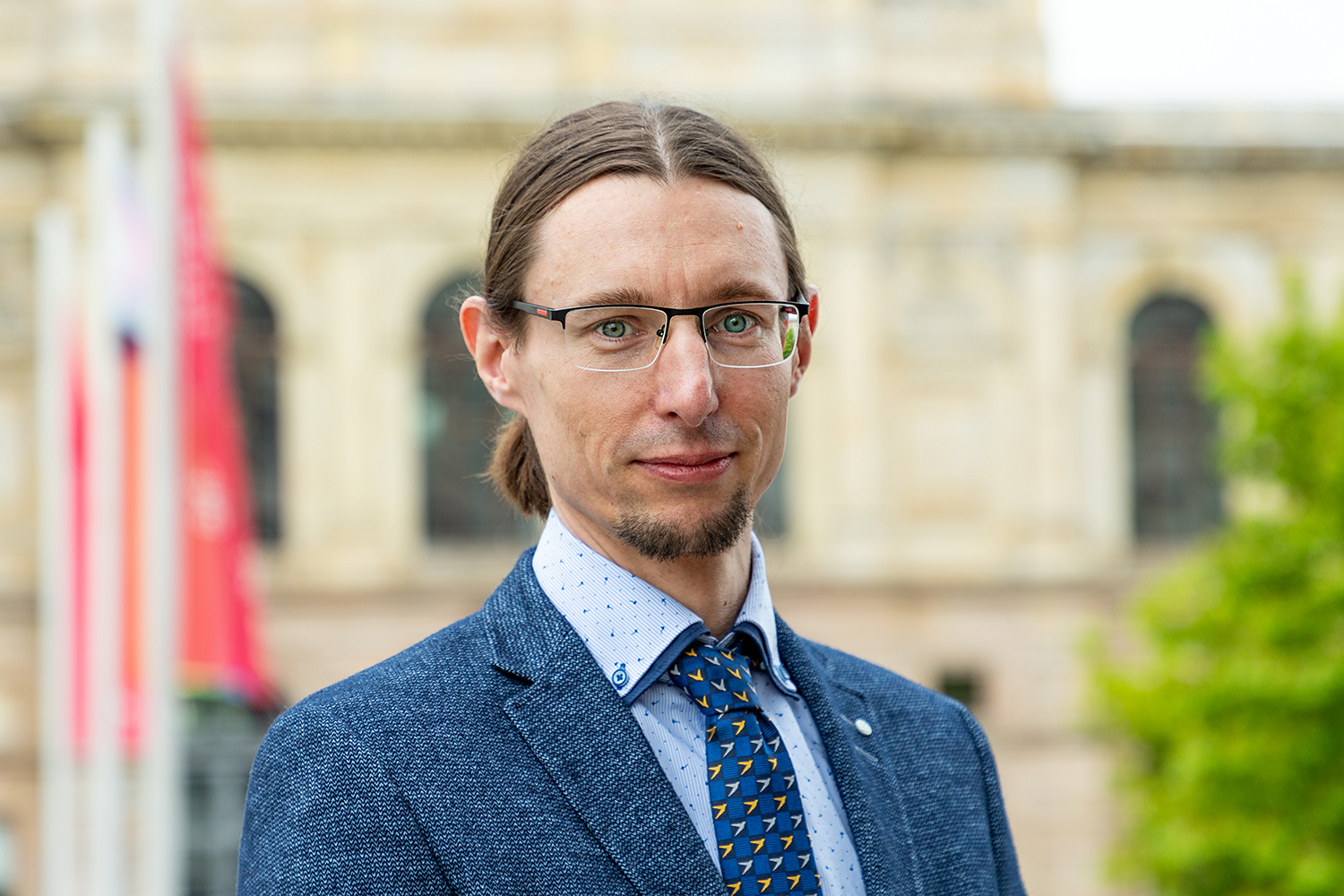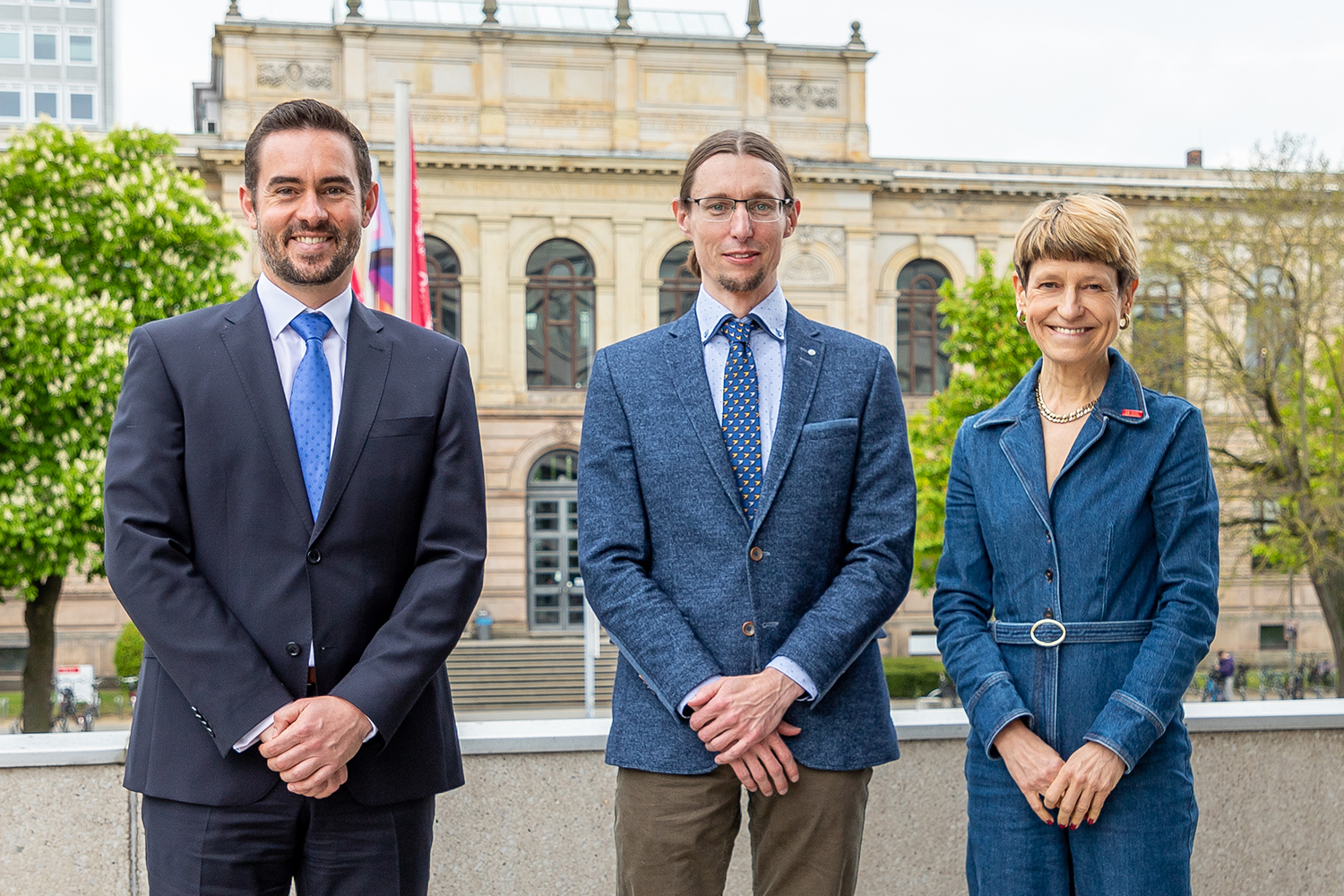The future of aviation: “We need bright engineering minds!” Ingo Staack is Professor at the Institute of Aircraft Design and Lightweight Structures
In May 2023, Ingo Staack moved to TU Braunschweig after more than ten years at a Swedish university. It was the good reputation of aerospace research in Braunschweig and the networked research environment that appealed to him. At the university he would like to continue the reorientation of the Institute of Aircraft Design and Lightweight Structures, which is also involved in the Cluster of Excellence SE2A with a project[1]. In general, Professor Staack has many plans and has a lot of enthusiasm for them. Read the answers to our questionnaire to find out how he returned to Germany, what he is researching and what motivates him.
Professor Staack, have you settled in well at TU Braunschweig?

Prof. Ingo Staack. Photo credit: Kristina Rottig/TU Braunschweig
Yes, thank you, the transition period from my previous place of work, Linköping University (LiU) in Sweden here to TU Braunschweig, was a very stressful but also wonderful time. In addition to all the professional things, you also have to take care of a few private things, such as finding a place to live, de-registering the old address, then re-registering with the local council. I flew to Braunschweig on the first of May, moved into my flat, bought a bicycle and was at the institute at 8 a.m. on the second of May. You don’t happen to know anyone who needs a sailing boat or a temporary flat in Linköping?
Why did you choose TU Braunschweig?
After 14 years at the same university, I wanted to see something new again. Now, it’s not like a professorship in aircraft (pre)design is advertised every day! These are unique opportunities that you don’t want to miss. And the combination of the aviation and ramp expertise within TU Braunschweig with the research ecosystem of the research airport, DLR, the Physikalisch-Technische Bundesanstalt (PTB), the Luftfahrtbundesamt (LBA) and the Bundesstelle für Flugunfalluntersuchung (BFU) result in a very active, interesting, renowned and internationally established aviation research environment.
What differences have you noticed between Sweden and Germany?
To be honest, I haven’t even had a chance to eat yet. But I have noticed that TU Braunschweig is organised and structured differently compared to LiU. This is certainly due, on the one hand, to the Scandinavians’ technology-open mindset and, on the other, to the diametrically opposed organisational structure of the two universities; in short, I moved from the youngest Swedish university (from 1975) to the oldest in Germany (1745). At LiU, I was part of 450 staff in the Institute of Management and Engineering, now we are a team of about 35 people at the IFL (Institute of Aircraft Design and Lightweight Structures). At the moment, everything is different and unfamiliar. I will only be able to judge what is better and worse in the distant future.
What exactly do you deal with in your research?
Oh, we are concerned with the future of flying, mainly with civil air transport, but also special applications such as aircraft for fighting forest fires, rescue missions or unmanned aerial vehicles (UAVs). However, we do not (yet) build aircraft ourselves, but mainly do technology assessments and analyse future configurations and the resulting design consequences (e.g. configuration, weight, size, performance and cost). Paper aeroplanes, er, tigers, so to speak.
What made you decide to do research in this field?
Curiosity, fascination with flying, especially powered gliding, and with engineering in general. The latter can be seen very nicely in old sayings such as “science and art”[2], whereby art means the art of engineering (e.g. the water art in the Harz mountains!) and not the term of art in use today in the sense of a performing and visual art. We have now known how to design powered aircraft for exactly 120 years and—thanks to constant technological advancement—are far from having reached the end of a fascinating development chain! To be able to continue this success story despite today’s challenges (global warming, sustainable society) and to hold our own in international competition, we will continue to need bright engineering minds in the future!
What was your best experience as a scientist?
Oh, it’s hard to say! Research and teaching involve so many challenges and opportunities that it is difficult to define a best experience. As a team player, it is very nice to see what you can achieve together, for example in a research project, when everyone is actively involved. Personally, it is very fulfilling when you were 100% satisfied with yourself after a presentation or lecture (which doesn’t happen often!), when a project proposal is approved or a project can be successfully completed. But the nicest thing is probably when a doctoral student has successfully completed his or her doctorate, even if there is often a teary eye because then the person often leaves the group.

Prof. Sebastian Heimbs (Head of IFL), President Angela Ittel and Prof. Ingo Staack. Photo credit: Kristina Rottig/TU Braunschweig
Looking ahead: What are your plans?
Definitely a continuation of the reorientation, renewal and reorganisation of the Institute of Aircraft Design and Lightweight Structures (IFL) in a holistic approach together with Prof. Sebastian Heimbs as Institute Director. Together with our international, young and dynamic team, we are working hand in hand to align the IFL with future challenges and needs in research and teaching. In addition to general challenges such as “new work” forms of work, this includes digital and internationally networked teaching, a new drone laboratory for research and teaching, the modernisation of the experimental hall and staff workplaces, the creation of a good learning environment for our students, a secure IT infrastructure and much more.
A common research focus is of course sustainability and future zero-emission aviation scenarios. To accomplish this, on the one hand, technology possibilities (e.g. new fibre-reinforced materials, design principles and manufacturing) and risks (e.g. hydrogen tank and crash behaviour) must be investigated in high-fidelity simulations. On the other hand, the global impact chains and their influences or emissions and costs must be considered macroscopically; this is called life cycle analysis.
In addition to all these topics, the changing engineering environment due to new technologies—keyword artificial intelligence (AI)—the perception and acceptance of technology in society (keyword flight shame and Fridays for Future) and, as the most important point, the challenge to inspire more girls and women for aerospace in teaching and research are also important for us.
What would you like to pass on to the students?
Dream your life—live your dream! You should concentrate on your strengths and not listen (too much) to CV optimisers or job forecasts. You only become an expert in what you like to do. But as a young person, you often don’t know what you will enjoy doing later on. That’s why it’s good and right to try out different things with an open mind and find the right path for yourself. For example, during my studies at TU Munich, I devoted myself to active building, constructing and (experiencing) flying in the Academic Flying Group (Akaflieg), which contributed a lot to my understanding of aviation. Practical experience is the perfect complement to theory and tops any reference book!
What else would you like to add?
Perhaps the realisation that emerges when you have spent a long time in another country and culture: a different language and a different attitude is so valuable and holds up a mirror to yourself! I hope to conserve my Scandinavian-influenced attitude and transfer it, at least in part, to TU Braunschweig. If we were all a bit more fika, lagom, sunft vernuft and consensus-oriented, we would be much easier, better and more effective socially (especially in the STEM field)!
Thank you.
[1] ICA B5 JRG „Long-range aircraft configurations and technology analyses“
[2] In the logo of the Royal University of Stockholm, KTH, founded in 1827.

